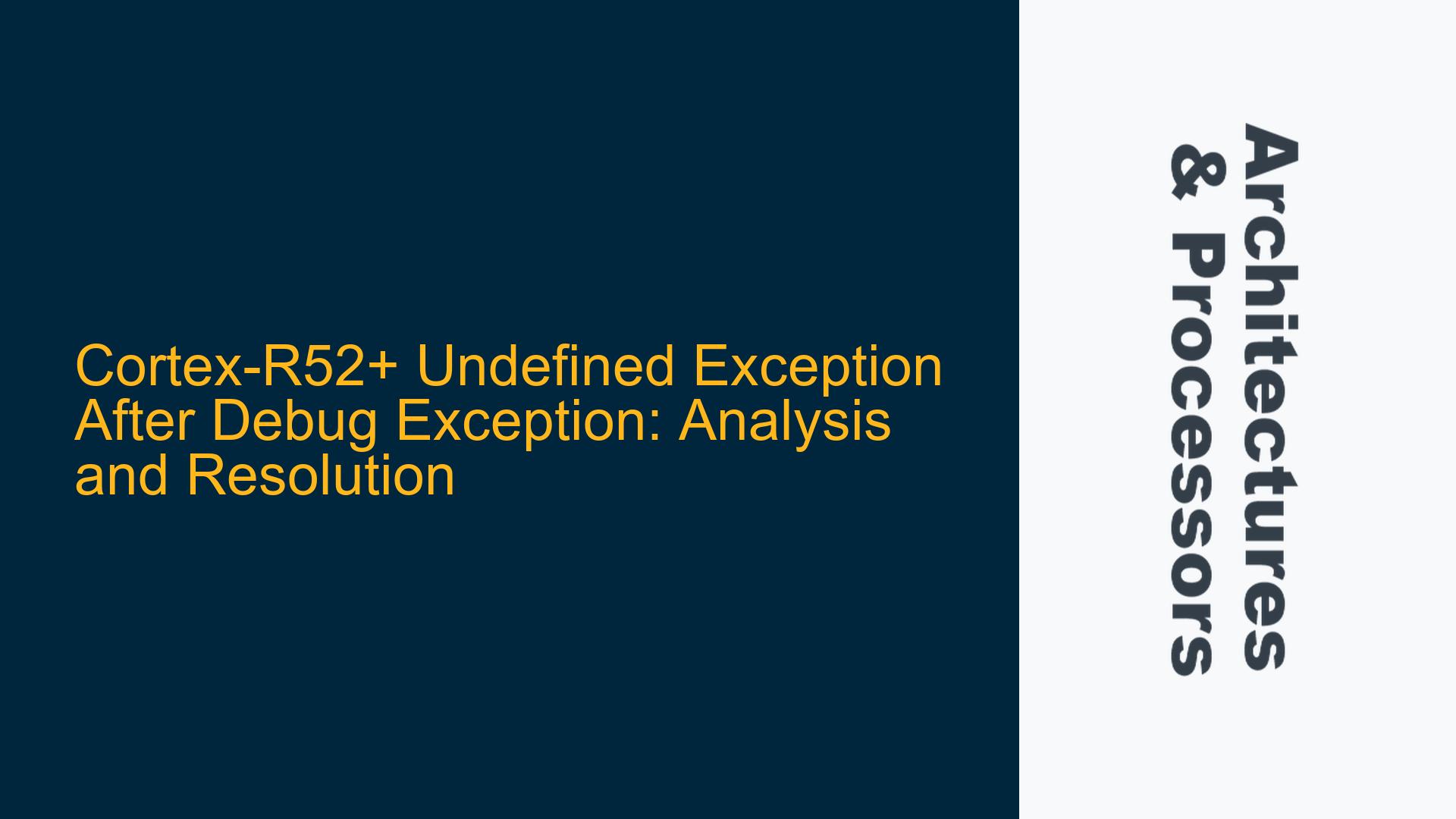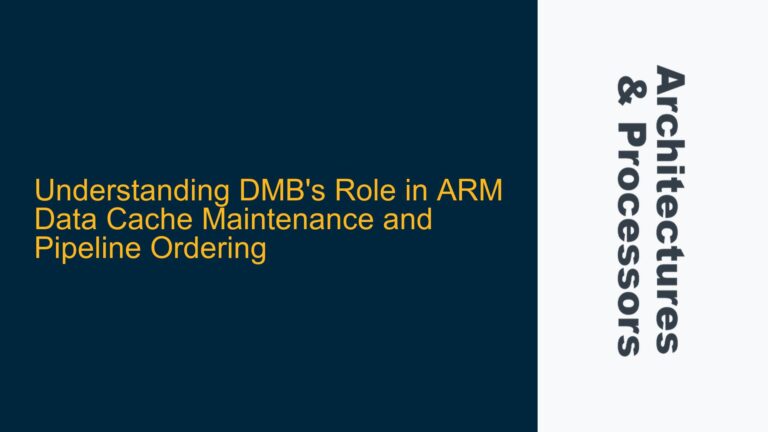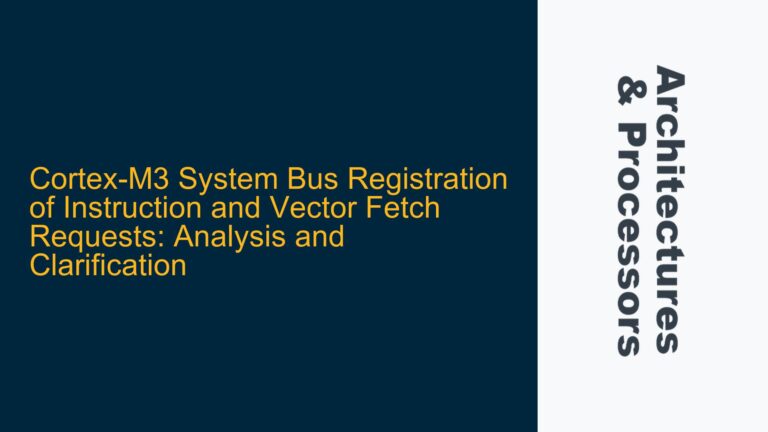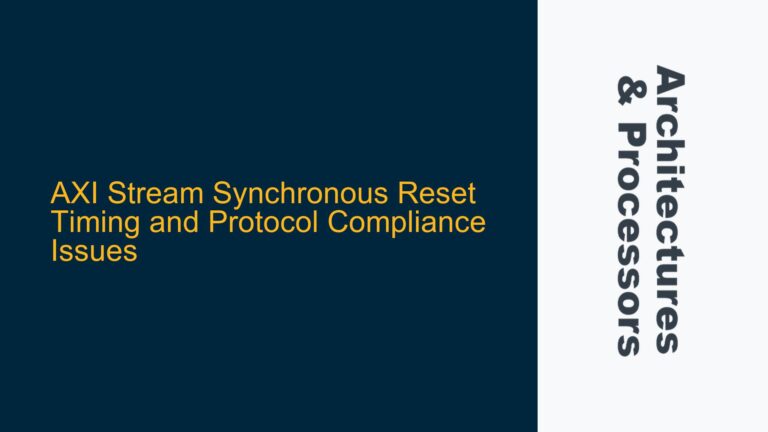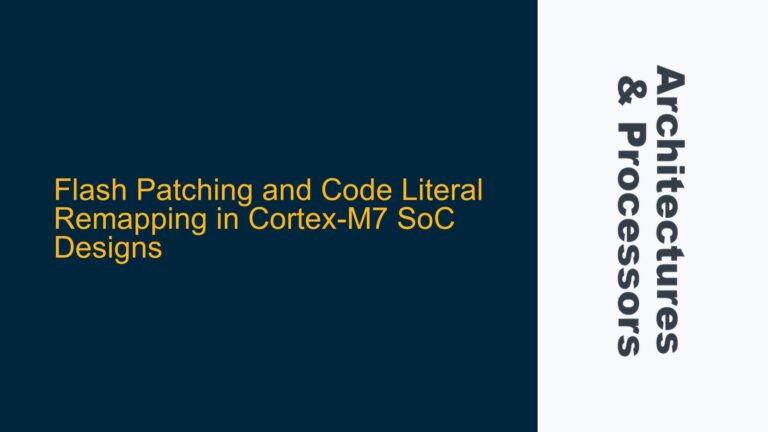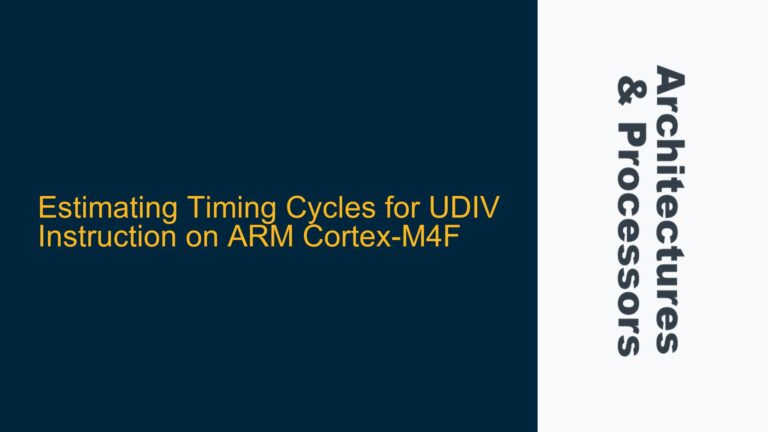Cortex-R52+ Undefined Exception Triggered Post-Debug Exception
The Cortex-R52+ processor is a high-performance, real-time capable core designed for safety-critical applications. It is common to encounter complex exception handling scenarios in such systems, especially when debugging is involved. In this case, the processor enters an undefined exception immediately after a debug exception. The undefined exception is triggered at address 0x28078482, which is two bytes after the instruction MOV R0, #01 at address 0x28078480. Interestingly, modifying the code by adding instructions before the MOV R0, #01 or changing the debug exception address prevents the undefined exception from occurring. This suggests a subtle interaction between the debug exception handling mechanism and the processor’s execution pipeline.
The undefined exception is a catch-all for instructions that the processor cannot decode or execute. In ARM architectures, this typically occurs when an invalid or unsupported opcode is encountered. However, in this case, the issue arises after a debug exception, which complicates the analysis. Debug exceptions are typically used for breakpoints, watchpoints, or single-stepping through code. The fact that the undefined exception is triggered immediately after the debug exception indicates a potential misalignment in the processor’s state or pipeline during the exception handling process.
The Cortex-R52+ core employs a dual-issue pipeline, which allows it to execute multiple instructions per cycle under certain conditions. This pipeline architecture, combined with the processor’s real-time capabilities, can lead to complex interactions between exceptions and instruction execution. The debug exception might be altering the processor’s state in a way that causes the subsequent instruction to be misinterpreted or improperly executed, leading to the undefined exception.
Debug Exception Handling and Pipeline Misalignment
One of the primary causes of this issue could be the interaction between the debug exception handling mechanism and the processor’s pipeline. When a debug exception occurs, the processor must save its current state, including the program counter (PC), CPSR, and other registers, before transferring control to the debug exception handler. This process involves flushing the pipeline and ensuring that all pending instructions are either completed or discarded. However, if the pipeline is not properly flushed or if the processor’s state is not correctly saved, the subsequent instruction fetch and execution might be corrupted.
In the Cortex-R52+, the debug exception handling mechanism is tightly integrated with the processor’s pipeline. The debug exception is prioritized over other exceptions, and the processor must ensure that the pipeline is in a consistent state before handling the exception. If the pipeline is not properly synchronized, the instruction at 0x28078480 (MOV R0, #01) might be partially executed or misinterpreted, leading to the undefined exception at 0x28078482.
Another potential cause is the timing of the debug exception relative to the instruction execution. The Cortex-R52+ core supports both synchronous and asynchronous debug exceptions. Synchronous debug exceptions are triggered by specific instructions, such as breakpoints, while asynchronous debug exceptions can occur at any time, typically due to external debug events. If the debug exception is triggered asynchronously, it might interrupt the processor at an inopportune time, causing the pipeline to enter an inconsistent state. This inconsistency could lead to the undefined exception when the processor attempts to resume normal execution.
Additionally, the Cortex-R52+ core includes features such as branch prediction and speculative execution, which can further complicate the exception handling process. If the processor speculatively executes instructions that are later discarded due to a misprediction, the debug exception might interfere with this process, leading to an undefined exception. The interaction between speculative execution and debug exceptions is particularly complex and requires careful analysis to identify potential issues.
Resolving Pipeline Synchronization and Debug Exception Handling
To resolve the undefined exception issue, it is essential to ensure proper synchronization between the debug exception handling mechanism and the processor’s pipeline. This can be achieved through a combination of software and hardware techniques.
First, it is crucial to verify that the debug exception handler correctly saves and restores the processor’s state. This includes saving the CPSR, PC, and other critical registers before transferring control to the handler and restoring them before returning to normal execution. The handler should also ensure that the pipeline is properly flushed before resuming execution. This can be done by inserting appropriate memory barriers or synchronization instructions, such as Data Synchronization Barriers (DSB) or Instruction Synchronization Barriers (ISB), to ensure that all pending operations are completed before continuing.
Second, the timing of the debug exception should be carefully controlled to avoid interrupting the processor at critical points in the instruction execution. If the debug exception is triggered asynchronously, it might be necessary to disable asynchronous debug exceptions during critical sections of code where pipeline synchronization is essential. This can be done by modifying the debug control registers to disable asynchronous debug events temporarily.
Third, the interaction between speculative execution and debug exceptions should be carefully analyzed. If speculative execution is causing the issue, it might be necessary to disable branch prediction or speculative execution in the affected code sections. This can be done by modifying the processor’s control registers or by using specific instructions to disable speculative execution temporarily.
Finally, it is essential to verify that the instruction at 0x28078480 (MOV R0, #01) is correctly aligned and does not cross a cache line or memory page boundary. Misaligned instructions can cause unpredictable behavior, especially when combined with exception handling. If the instruction is misaligned, it should be realigned to ensure proper execution.
In conclusion, the undefined exception issue in the Cortex-R52+ processor is likely caused by a combination of pipeline misalignment and improper debug exception handling. By carefully analyzing the interaction between the debug exception mechanism and the processor’s pipeline, and by implementing appropriate synchronization and control techniques, it is possible to resolve the issue and ensure reliable operation of the system.
